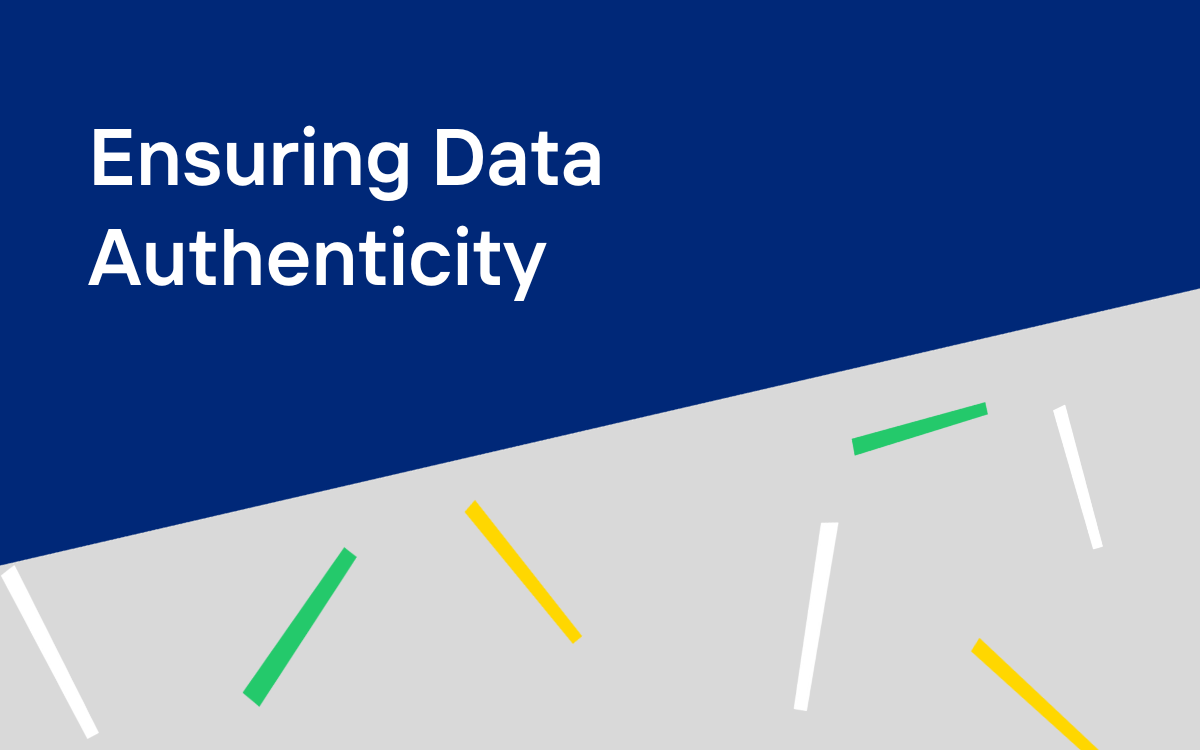Bot traffic is essentially non-human traffic to a website. Online services use bots extensively to collect data from the internet and to improve our user experience.
Bots also outperform humans considerably when it comes to scraping substantial amounts of data or carrying out repetitive tasks.
As bots have the ability to perform repetitive tasks in a quicker manner, they can be used for both good and bad purposes.
“Good” bots, for instance, can check sites to make sure that all of the links work effectively, evaluate website performance, and collate useful data.
“Bad” bots, on the other hand, can be unleashed for the purpose of overloading servers with denial of service (DDoS) attacks, spreading viruses, and stealing data.
Because of this, it is important to make sure that you put measures in place to detect bad bots and prevent them from having a detrimental impact on your business.
Who’s behind malicious bots?
Before we reveal more about the advanced bot detection methods that are used today, you may be wondering who is behind bad bots.
Scammers and fraudsters with malicious intent are typically behind these bots. However, as there are many reasons why bots are deployed, many different types of people can use them.
Take website owners as an example. Some site owners may increase their own marketing revenue by using click fraud.
If they display an ad on their website and receive money every time someone clicks on the ad, it works to their benefit to get a large number of clicks. So, they may utilize bad bots to inflate the number of clicks and receive more money.
We have also seen website owners use malicious bots in terms of creating new content without putting in the effort or time. Web scraping bots, as they are known, are designed to crawl websites and duplicate the content.
We are also increasingly seeing bad bots being used in the political sphere. They can be used to influence the political process and further someone’s political agenda.
A prime example, in this case, would be social media bots, which are used to create fake accounts and spread falsities to promote certain ideas. If you are an avid social media user, we are sure you will have come across plenty of bot accounts before!
Why do you need advanced bot detection and mitigation?
There are a number of different reasons why it makes sense to prioritize bot detection and mitigation at your business. This includes the following:
Make better business decisions
If your website has been infiltrated with bad bots, your analytical data will end up being skewed. This makes it incredibly difficult to understand how your business is performing. However, if you eliminate unwanted bad bot traffic, it can have a positive impact on your legitimate Business Intelligence (BI) data. You can focus on authentic consumer engagement, which will enable you to make the best possible decisions for your business moving forward.
Enhance page loading speed
Your customers will notice a considerable difference with regards to how long it takes for your website to load. There are two ways that bot detection and mitigation can improve your website’s speed, and these are as follows:
- Boost browsing speed for genuine customers – When automated bots crawl your website and commit fraudulent activities, a significant amount of server processing is needed so that excessive bad bot traffic can be accommodated. When a real-time bot detection system is deployed, unwanted traffic is blocked and this frees up server resources. The reduction in CPU load will enhance the processing of genuine hits, and there will be a considerable drop in the server-side response times. This is why such a considerable improvement is noted.
- Optimize server space and bandwidth – An advanced bot mitigation strategy can assist in terms of enhancing server bandwidth and saving a considerable amount of server space. For example, if a bot requests a page on a website, it consumes the bandwidth to fetch the request from the server to the browser. Today, online companies get significant amounts of web traffic. If a bot’s page request consumes 1 MB, and your website experiences one million bad bot hits per month, you could be saving 1 TB of server bandwidth with effective bot protection.
Make significant cost savings
Getting rid of malicious bots from your mobile application, APIs, or site will result in improved business metrics. For example, no accounting fraud and an increase in e-commerce conversions. All of this helps to lower the infrastructure expenses related to serving traffic to bad bots.
Establish yourself as a trusted business
If you do a quick search on social media whenever concert tickets go on sale, you will see that there are lots of comments from frustrated customers. A lot of these remarks reference bots and people express their disappointment that these companies are not doing enough to make sure that only genuine fans get tickets.
Although these companies are not directly responsible for the scalping that’s going on, whether it’s for event tickets, sneakers, or games consoles, it reflects badly on them because their products are not getting into the hands of genuine customers. By deploying advanced bot detection and mitigation software, you can make sure that your business maintains a reputation as a trustworthy and reliable company.
Stay ahead of the competition
Another reason why bot detection is important is that this can help you to stay ahead of the businesses you are competing against in your industry.
There are some competitors that rely on bots that scrape your content and prices to either republish for their own benefit or underbid.
With effective bot detection and prevention in place, this makes it incredibly difficult for competitors to gather this information.
Moreover, the earlier point about protecting your brand and creating a trusted business presence is important. Trust is something that can be incredibly difficult to build, so once you have this reputation, it is going to be extremely hard for the competition to surpass you in this area.
Ensure you are compliant with data protection frameworks
Data protection frameworks like CCPA and GDPR need to be adhered to. You cannot cut corners in this regard, and compliance is certainly not optional.
Regulators realize just how critical data protection is today, and this is why we have seen a lot of businesses handed heavy fines, often amounting to millions of dollars, for non-compliance. Bot detection is critical in terms of protecting your sensitive data and achieving compliance.
Be proactive, rather than reactive
Finally, bot detection and mitigation are critical because it means that you are going to spend less time in crisis mode, and more time moving your business forward and concentrating on growth.
An effective bot attack impacts your entire business, from your marketing and customer support teams to your tech department. With an effective bot management solution in place, you can make sure that you have a proactive approach that will keep your business protected so you can concrete on growth and moving forward.
The opposite of this would be a reactive business. A business that is continually acting after the fact. These sorts of businesses spend a considerable amount of time cleaning up the damage that has been done, rather than focusing on further growth and achievement.

Advanced Bot Detection Techniques Used Today
Unfortunately, a lot of businesses rely on outdated techniques to fight against bad bots, including CAPTCHAs and WAFs. Asking customers to identify trains or ships simply does not cut it anymore. We need more than this. With that being said, let’s take a look at some of the advanced bot detection and mitigation techniques that today’s leading cybersecurity companies are deploying:
Use the skills of a competent threat research team
Not only do you need to make sure that you implement advanced bot detection software, but this needs to be backed up by an experienced and competent threat research team that can evaluate open source libraries and forums to understand the latest techniques and technologies that bot operators are using.
After all, bad actors are getting more and more advanced, with bot sophistication increasing all of the time, and so security teams must be constantly expanding their knowledge and using this new research to integrate it into their security solution so that users can be protected from new threats.
This is something you can be sure of at Kasada. We know that the cybercrime and security landscape never stays still. Adversaries are becoming more sophisticated all of the time, and so we need to make sure that we are one step ahead of the game with the solutions that we provide.
Client interrogation
You need a solution that will interrogate all client requests for immutable evidence of automation left behind by bots when they interact with your applications. This is a client inspection process that is not visible to humans.
Some of the things that you need to look out for include automation frameworks and headless browsers. Inference will determine if the request has come from a good bot, bad bot, or a human. At Kasada, we use our own polymorphic method to obfuscate sensors so we can deter any reverse engineering attempts.
Use mitigative actions
We use mitigative actions to prevent bots from gaining access to your systems. Some examples include fighting automation with automation, advanced cryptographic challenges, and customizable responses.
Cryptographic challenges make the client solve an increasingly difficult asymmetric cryptographic challenge as proof of work. Customizable responses are designed to deceive bot operators while also making bot attacks too costly to conduct at scale.
Whitelist helpful bots and block bots masquerading as good bots
A significant number of bots will utilize crafty techniques to make it appear that they are the Googlebot, as they know that this is a bot that virtually every business is going to whitelist.
This is why advanced bot detection solutions need to have the capability to be able to tell which requests are good bots and which requests are malicious bots masquerading as helpful bots.
Genuine bots should be added to a whitelist. Moreover, for those bad bots that appear to be good bots, they should be stopped.
Client-side and server-side signals
In addition to the different techniques that we have mentioned so far, it is important that both client- and server-side signals are used for the identification of bots.
Client-side detection involves using techniques like user event tracking, app tracking, and browser tracking to detect significantly more advanced bots.
Server-side detection can be sufficient in terms of identifying basic bots, yet it cannot identify advanced bots with consistent TLS, TLC, and HTTP fingerprints.
As a consequence, you need a solution that uses both approaches in order to detect bots effectively.
Fake data
Using fake data won’t prevent bots, but it can stop them from extracting authentic information about your business, and it can be incredibly satisfying in the process.
Bots take any data that you provide them with. Therefore, if you provide data that opposes your company, this is going to prevent them from getting the information they are seeking or any sort of data that could hurt your business.
Continual data analysis
An advanced bot detection solution is one that depends on data, and therefore, it must analyze every request. You cannot simply periodically assess data samples. Instead, you need to ensure that 100 percent of all requests across all of your endpoints are being evaluated.
Today’s leading, advanced bot detection solutions can process trillions of pieces of data in real-time, and they will smoothly absorb the sudden peaks in internet traffic that tend to be typical when a bot attack is happening.
Our deep analysis of traffic patterns and adversarial techniques involves assessing all request and sensor data. We also add learnings from our data to the client inspection process in real-time without any need for code upgrades.
Step-by-step detection
There are certain rules that every bot must follow in order to access a site, no matter whether that bot is good or bad. These simply include whitelist approval and verification. If a bot has whitelist approval, it will be able to enter the website. If it does not have this approval, it will go onto the next step.
For bots that are not on the whitelist or seem unusual, a type of signature will be needed. This will simply be a JS challenge, for example, answering a question or selecting certain images. If there are still concerns, a response will be activated. This typically means the user is blocked and is not allowed to enter the website in question.
Advanced browser validation
Sophisticated web scraping bots claim to be one browser type, and then they escape detection by rapidly cycling through user agents. Advanced bot detection will validate that every browser is what it claims to be, that all of the components perform in the manner they should, the browser is formatted properly, and it has the correct JavaScript engine.
Teaming up with an advanced security team with a deep understanding of browser automation frameworks and human behavior is critical in distinguishing between legitimate users and automation tools.
Identify malicious behavior with machine learning
Let’s get one thing clear: machine learning is an important tool for bot detection, but it’s not sufficient as a lone solution.
Advanced bot detection and mitigation that uses machine learning involves collecting and assessing data about the behavior of every device that is roaming your website. These advanced solutions will then pinpoint any anomalies specific to your website’s unique traffic patterns.
Botnets that use malware to hijack real devices can be caught through biometric data validation, including accelerometer data, mobile swipe, and mouse movements.
Using machine learning to stay ahead of the newest bot trends is critical. Vast amounts of data can be organized and processed to improve prediction accuracy, even for security threats that we have not yet seen.
However, there is one drawback: machine learning relies on historical data. This means bots cannot be stopped on the first request. Plus, when a bot is trained to act like a human, it can end up flying underneath the radar and evading machine learning techniques.
Real-time client-side detection and server-side data analytics add layers of depth, which a bot operator needs to overcome to be successful.

Basic bot detection methods that do not work today
There are a number of different approaches to bot detection that have been used over the years. We’re sure you have seen a few of them yourself. If you have ever tried to purchase an event ticket, and you’ve been met with nine squares and told to click on the squares that have traffic lights in them, you will know exactly what we are talking about.
While these approaches may have been sufficient in the past, cybercriminals and threat actors are becoming more and more sophisticated. This means that we need to adapt and become more sophisticated in our approach as well. We cannot rely on the basic approaches and techniques that may have worked five years ago.
To give you a better understanding, below, we are going to take a look at three typical detection methods that we see widely used today. These approaches may be widespread but they are also ineffective and should not be used on their own to prevent malicious bots.
Multi-Factor Authentication
The first method we are going to take a look at is multi-factor authentication. Of course, there is a place for MFA, and it can work well when securing a user’s account. If your user has accounts on various apps and websites, it is advisable to turn multi-factor authentication on.
However, you may notice that there are quite a lot of people who ignore this request, or they end up turning MFA off after a while. Why? Well, they see it as an inconvenience. It takes too long for them to log-in to their accounts, and internet users are all about convenience today. As a consequence, this limits multi-factor authentication as a security solution because the take-up is so low.
In addition to this, while multi-factor authentication can be beneficial in terms of offering protection against account takeovers and credential stuffing attacks, it will not protect your company from other bot attacks that can cause severe damage, including DDoS attacks and web crawlers.
Web Application Firewalls
Next on our list of typical detection methods we have Web Application Firewalls, which have been designed for the purpose of protecting websites or web apps from known attacks, such as cross-site scripting, session hijacking, and SQL injections.
Web Application Firewalls use a number of different rules that are designed to filter out the good bot traffic from the bad bot traffic. In particular, Web Application Firewalls are searching for requests that have familiar attack signatures.
As a consequence of this, only familiar threats can be blocked using Web Application Firewalls. And, as we have mentioned a number of times, today’s bots are advanced, and they are changing all of the time. They do not have attack signatures that are obvious. Instead, threat actors do everything in their power to ensure that bots look anything but obvious, hence the emergence of advanced bot detection.
Furthermore, a lot of bot attacks remain within perfectly normal business logic. Account takeover fraud is a prime example here. It simply looks like someone is genuinely trying to log on, and Web Application Firewalls will not flag this as a possible issue.
The limitations do not end there either. A lot of Web Application Firewalls depend on IP reputation for bot management. Should the IP reputation of a request be negative, the Web Application Firewall will assume that all of the activity coming from that IP is bad. On the flip side, if the IP has a good reputation, it is going to assume that all requests from the IP in question are good, and it will let them through.
This is a problem because bot operators will rotate residential IP addresses. These are high-quality IP addresses and they can be rotated easily and cheaply. This is another reason why Web Application Firewalls are not sufficient when it comes to detecting and protecting your system from bots.
CAPTCHAs
Last but not least, we have CAPTCHAs, which were created in the late 1990s for the purpose of preventing bots from spamming forums or search engines. It should, therefore, not be too surprising to learn that they don’t work now, over 20 years later.
Back then, bots were not as difficult to filter out, and CAPTCHAs were rather effective for a fair number of years. Unfortunately, those days have gone by, and there are two key reasons why CAPTCHAs are no longer as effective as they used to be. These are as follows:
- CAPTCHAs are no longer effective at identifying bots – Firstly, and most importantly, CAPTCHAs simply aren’t very good at identifying bots these days. This is because bots are not the same as they used to be. A lot of bots utilize an API that connects to CAPTCHA farms, which can solve any of the puzzles or challenges on your screen in a matter of seconds. And, these CAPTCHA farms aren’t costly either, so there are no barriers from a financial perspective. Furthermore, bots today can appear so human that they are often not presented with a CAPTCHA in the first place.
- CAPTCHAs make the internet less accessible – Secondly, the internet becomes less accessible when using CAPTCHAs. Image or audio recognition challenges are a nightmare for anyone who has a disability. They can also be frustrating for users on mobile phones while doing their daily commutes. Plus, they kill your conversions, as it can be quite difficult for people to solve these challenges, and it can mean that there is friction at vital points on your web apps or websites.
Final words on advanced bot detection methods
There are many reasons to use bot detection and as you can see, the importance of using advanced bot detection solutions cannot be overlooked today. Unfortunately, an increasing number of businesses are using outdated approaches, which are simply not sufficient enough to identify and prevent malicious non-human internet traffic.
This is why you need a solution such as the one provided here at Kasada to help you detect bots effectively and prevent them from infiltrating your system. If you have any queries, all you need to do is give us a call on 877-473-5073. Or, why not request a demo and see what all of the fuss is about? In fact, all you need to do is enter your URL into our live chatbox and we can run a test to find out whether any modern bot attacks are detected.
FAQ about advanced bot detection techniques
We often receive questions about bot detection, so we have answered some of the most common below. Please do not hesitate to contact our team if you have any further queries.
How are bots detected?
Web engineers can look directly at network requests to their websites and identify non-human traffic. Using a bot detection and management service, such as the one provided by Kasada, is the most effective approach.
How do you get around bot detection?
There are a number of different techniques that people use to get around bot detection, including IP rotation, headless browsers, and setting a referrer. These approaches are getting more sophisticated all of the time, which is why advanced bot detection and mitigation are a must.
How do you know if a bot is clicking?
There are a number of different things you can look out for in order to determine whether or not a bot is clicking, including page duration, whether they visit more than one page, activity on-site, bounce rates, and whether they hit every single page on your site within seconds.
What is advanced bot detection?
Advanced bot detection solutions have been designed to protect your websites, APIs, and mobile applications from automated threats and various kinds of fraud attacks without the flow of business-critical internet traffic being impacted. In today’s digital landscape, bots are more elusive than ever before, and we need advanced methods such as machine learning to detect them and to signal out the malicious bots from the good. This is why an advanced solution is a necessity.





